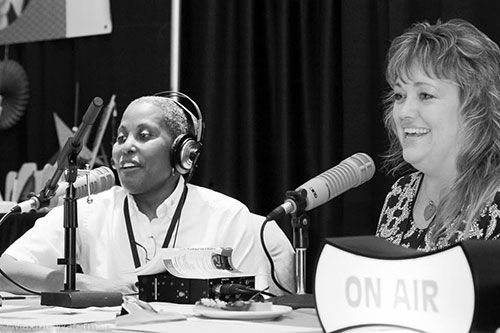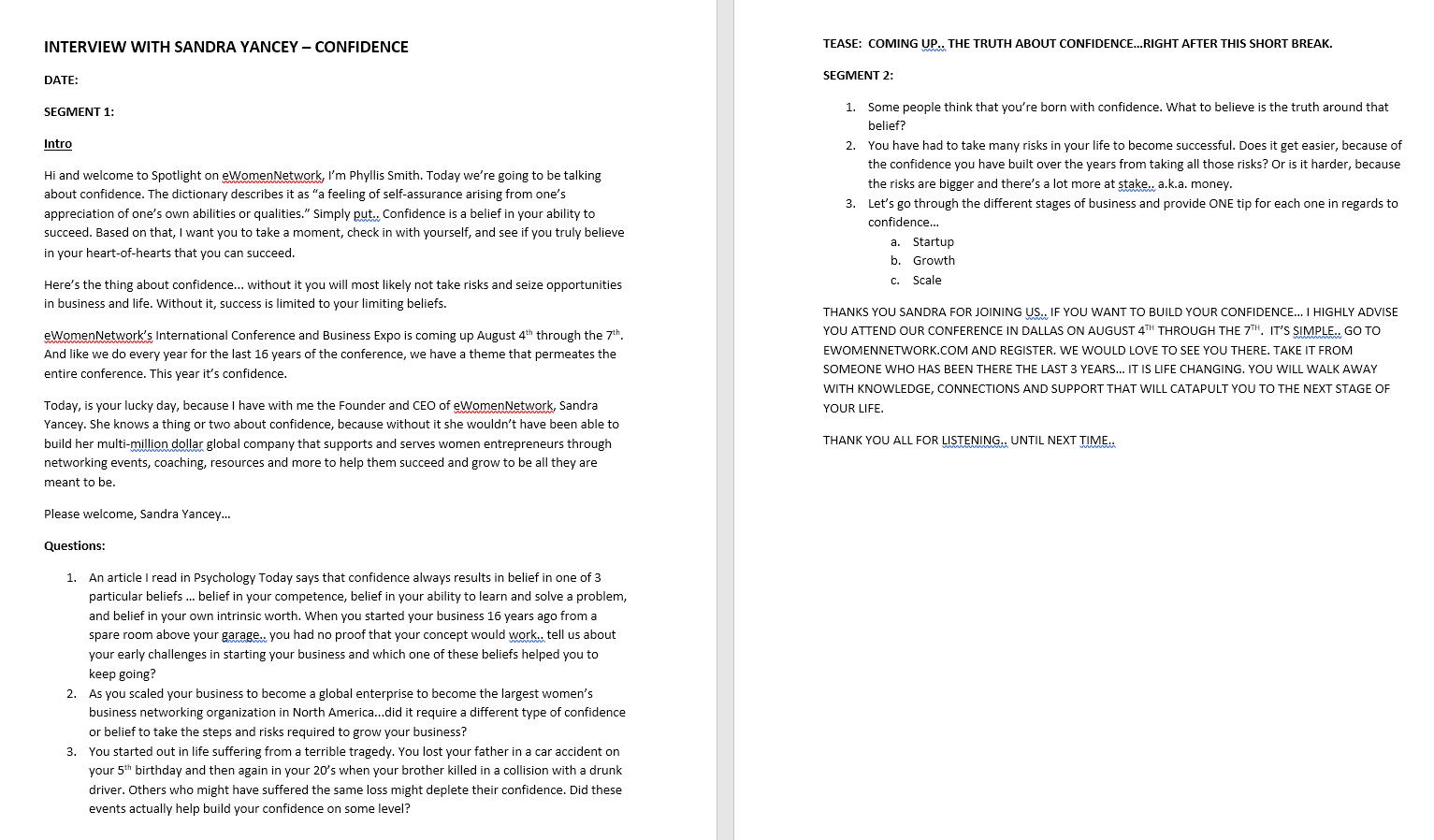Podcasting is Hot!
Podcasting is king…and queen. As I mentioned in Part-1 of this series, “How to Create a Podcast that Grows Your Business,” there are more than 60 thousand podcasts on iTunes alone! That doesn’t include all the other podcast hosting sites like Stitcher, Soundcloud and Archive.org. Podcasting is not the NEXT big thing. It IS the thing. So if you want to stand out among the other podcasters, you need to create a podcast that rocks.
How to Produce a Podcast that Grows Your Business
Once you’ve completed your to-do’s from Part-1 of this series, including deciding the “end-game” of your show, choosing a format, picking a snappy title, creating a cool show graphic, buying a good microphone and creating a good list of show topics, it’s time to put it all together. As someone who has spent most of my career as a producer in both TV, radio and corporate video, I can say with confidence that I’ve got the scoop on how to produce a show.
Producing is not about, “Hey, let’s put on a show!” and then miraculously you sit down in front of your microphone and go. It requires a lot of thought, planning and time. Doing your show is actually the easy part. It’s what gets done behind-the-scenes where the real magic happens. First you need to have branding elements for your show.

Basic Elements of a Podcast
Here are some tips on how to produce the basic elements for your podcast:
Show Open
Visit my Host page on eWN Radio Network and listen to the opening of my show. (You can listen to the shows in full too if you want and finish reading later! :- ) I talked about this in Part-1 as well, but it’s important that you understand why the Show Open is important. The Open is your brand and will tell your new listeners exactly what your show is about. It’s the packaging of a product, your “audio logo” so-to-speak. (Hey, I just came up with that…”audio logo!” Love it when the creative juices are flowing.) So, really think about your brand and how that will translate into audio. When I worked in broadcast radio, we would call it, “Theater of the mind.” Here’s how to create an effective Show Open:
Start with music – What type of music screams out your brand? Jazzy? Corporate? Rock? Happy? You can find relatively low-cost royalty-free music at AudioJungle.com.
Write a 10-15 second script that explains what your show is about. Think of this as you would a tagline for your business.
Find a voiceover talent who represents your brand. Male? Female? Young? Old? Ethnic? Unless you know someone who will do this for you, I recommend Fiverr.com. All services start at $5. They go up based on the level of service. Once you pick your talent, Fiverr explains how to get them your script. They can also produce the Open for you with music if you don’t know how to edit audio. Yes it’s an additional cost, but it’s worth it.
Bumper music
This is the music you play when you come back from a commercial, or if you don’t have commercials, you could use it as an interlude between segments. This could be the same music you use in your open or different for each show NPR, for example, plays different music for each break. Their listeners actually look forward to the different tracks. I play the same music when I come back from a break because I like the consistency. It reinforces my brand. Listeners will come to identify my show with the music. If you are promoting your business through your show, then I recommend you stick with one type of music that best represents your brand.
Rejoiners
I like to use rejoiners to welcome listeners back to my show. Consequently, I had my voiceover artist record things like, “Welcome back to ‘Spotlight on eWomenNetwork.’ Here’s your host, Phyllis Smith.” Another example might be, “You’re listening to ‘Spotlight on eWomenNetwork.’ Here again is your host, Phyllis Smith.”
Show Close
The Show Close is like your Show Open, but this would be the perfect place for a call-to-action. Using the same voiceover talent and music from your Open, you might say something like, “Thanks for listening. If you want to hear more of my show, ‘Spotlight on eWomenNetwork,’ visit my website at eWomenNetwork.com.” Or, let’s say you have a free gift on your website to help grow list, you might say, “Hey thanks for listening. Check out my website at blablabla and get your gift for just being one of my loyal listeners.” Get the idea?
Systemize Your Podcast
Show Spreadsheet
This will become a checklist for your show. Include columns for Date (of recording or live show), Episode Title, Guest Name, Guest Email, Guest Phone, Contact guest (Y or N), Guest Response (Y or N) and Notes.
Script Template
Create a template for each show that includes Date, Episode Title, Guest Name, Guest Title, Name of Guest book (if applicable), Intro for guest, Questions and Tease.
Guest Invitation Email
Write-up an email that you will send to all the guests inviting them to be on your show. Make it easy on yourself. You might need to tweak it a bit to personalize it for that particular person, but it will save you time not having to write a new email for each person.
Guest Info Email
Write up another email that includes an attachment for the guest to fill out. This should include their name, title, title of book (if applicable), short bio, suggested questions and social media links. Include your social media links as well, and request that the guest help you promote the show to their community and tag you.
Thank You Email
It’s always nice to send a thank you note to your guest with the date the show will be posted, and remind them of your social media links and help in promoting their interview.
Content for your Podcast
Ok, so now you have your branding elements for your show and your templates. It’s time to get to the heart of your show, content. This is the reason people will keep people coming back to listen and become loyal fans. In Part-1, I asked you to come up with a list of topics for your show. You can never have too many topics. Once you’ve done that, here’s your next steps:
Decide on your show guests
Review each of your topics and decide if you want a guest to join you, and if so, who? Write it down. Don’t think too small. Go for the big guns. The bigger they are, the more followers they have, the bigger the audience they will draw to your show. In the beginning you might not get the big ones, but in time you will. Keep trying!
Book your guests
Once you decide who you want to interview, Google is now your best friend. This is where you will have to get creative to find out how to contact your guest. If they are celebrities, go to
SAG-AFTRA to help you find their manager. If they’re an author, find out the publisher and call their offices. Ask for the publicist of that author and they should be able to point you in the right direction. Once you have nailed down the person who can help get the guest on your show, send your Guest Info Email.
Research your guest and your topic
Know who you are talking to. A bio isn’t enough. If they wrote a book, make sure you either read the book or skim through it enough to help develop your questions. Look at their website. If they are a business-owner, learn about their business. What are the challenges of that industry? Who are their competitors? Don’t just make it a publicity piece for their book or project. Watch videos of them on YouTube if there are any. In your email to the guest, you will be asking them for questions as well. Don’t be surprised if the guest provides you with questions which drives publicity for his/her products and services. Fluff doesn’t attract listeners. Controversy and hard-questioning does.
It may be necessary for you to supplement the questions your guest sends you. We’ll be talking about hosting a show in Part-3 of this series, but think about what you would want to listen to. Think of your favorite radio shows, podcasts or TV shows. I encourage you to listen to some of the interviews on NPR. Not only are the interviews compelling, but they really know how to add interesting sound and create that “theater of the mind” I mentioned in part-1. John Stewart is another example of a great interviewer when he hosted the Daily Show. He had about 3 minutes with each guest and rarely did they ever talk about the movie they were in. They talked about the stuff that everybody secretly wants to know.
Write Your Script
Now that you know everything you need to know about your guest and your topic, it’s time to put pen to paper (or keystroke to document). This is where you use your script template. I have included an example of one of my scripts below that I used in an interview with our CEO, Sandra Yancey. Notice in my intro, I don’t just start out with a bio of my guest. I first set up the show with the topic we’ll be discussing. Unless your guest is a celebrity or well-known author, people mostly listen because they’re interested in the topic. (You can click on the script to listen to the entire episode)
It's Showtime!
It's time to turn on your microphone, plop your headphones and introduce yourself to the world! But.. we'll save that for Part-3 on How to Host your Podcast.
As I say at the end of all of my shows...until next time...
 |
Author - Phyllis Smith
Content Manager, eWomenNetwork
Podcast Host, eWN Radio Network Host











